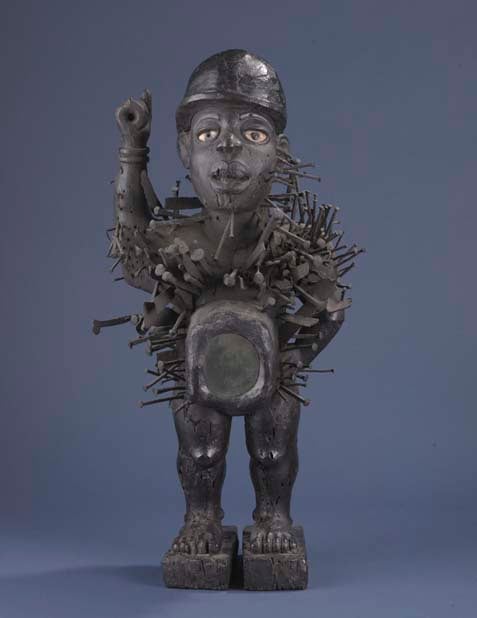Politics
After 27 Years, Royal Ontario Museum Finally Apologizes for Racist Exhibition
The African-Canadian community accepted the long-awaited apology.
The African-Canadian community accepted the long-awaited apology.
Alyssa Buffenstein

An apology 27 years in the making was issued yesterday, from the Royal Ontario Museum (ROM) to the African-Canadian community in Toronto. Dr. Mark Engstrom, ROM Deputy Director of Collections and Research, acknowledged the racist nature of the institution’s 1989 exhibition, “Into the Heart of Africa.” Rostant Ras Rico John, Chairman of the city’s Coalition for the Truth about Africa (CFTA), graciously accepted the apology.
“The ROM expresses its deep regret for having contributed to anti-African racism. The ROM also officially apologizes for the suffering endured by members of the African-Canadian community as a result of ‘Into the Heart of Africa,'” said Engstrom, according to a press release.
“The exhibition displayed images and words that showed the fundamentally racist ideas and attitudes of early collectors and, in doing so, unintentionally reproduced the colonial, racist, and Eurocentric premises through which these collections had been acquired. Thus, ‘Into the Heart of Africa’ perpetuated an atmosphere of racism and the effect of the exhibition itself was racist,” he said.

This Nkisi nkondi, Kongo power figure by an Unknown Kong artist is included in the original catalogue of “Into the Heart of Africa.” Image courtesy the Royal Ontario Museum.
“Into the Heart of Africa” was met with protests from the start, some involving violent police altercations. Protesters—some of whom went on to form the CFTA—demanded the show’s closure, or its re-staging after consults with the local African-Canadian community.
Objects on display came largely from the collections of Canadian missionaries and military men. The catalogue, which can still be accessed online, glorifies men with titles like “imperial commander” and “missionary explorer,” who collected artifacts in Africa as souvenirs around the turn of the 20th century.
The museum was silent on allegations of racism until 2014, when a symposium, titled “Of Africa,” rekindled conversation.
“When a wrong has been done, it has to be righted,” said John, according to the Globe and Mail. “ROM did not slip or slide nor hide in working with us.”
“The CFTA’s community gracefully accepts the apology advanced by the ROM,” he said.
The museum also outlined new initiatives to help repair colonial wounds, and relations between the museum and the African-Canadian community: two museum internships for young black people, increased partnerships with black educational networks, and a major 2018 exhibition of work by black contemporary artists addressing the white-washing of historic representation in Canada.